Imprint of Hope – Iraq
| GCHR
Imprint of Hope
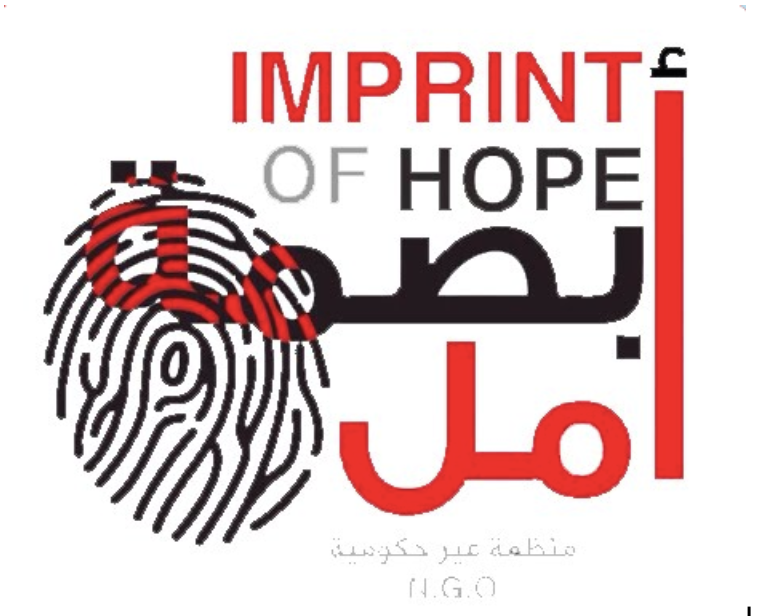
When Walls Speak
The walls in the streets of Baghdad are covered by political and partisan slogans, serving as a reminder of a long era of successive conflicts and crises. Abandoned buildings are blackened and inspire fear. Huge concrete barriers, close to which waste accumulates. These manifestations conceal the city’s landmarks, and bury its civilization with remnants of war, political propaganda and sectarian slogans.
This is what Baghdad’s areas and neighborhoods looked like, before “Imprint of Hope” touched, them, and had them turned into an “open museum for all.”
The Beginning
The early beginning came from an idea of Ali, a student at Al-Ma’amoun College in Baghdad, of forming a team comprising student volunteers to work on cleaning and painting the concrete walls surrounding the university and decorating them with beautiful paintings. The voluntary initiative turned into “Imprint of Hope for Youth and Human Development”. The organization was founded on February 2nd, 2016, by a group of youth from varying background and sects, and from a number of Iraqi universities and institutes. Today, the organization has 310 volunteers, including 54 girls.
“We are a group of conscious and educated youth who have a strong sense of belonging to this country. We exert our efforts in every way to raise the awareness of the Iraqi public from all ages and across the spectrum. Our particular focus is on youth, since they are the generation that will protect the resources of this country in order to advance its development. The approach is to contribute to furthering their awareness through interactive and objective methods.”
The team comprises artists, university students and craftsmen (blacksmiths, carpenters and masons). Through their drawings and paintings, they attempt to convey messages to their communities calling for abandoning sectarianism, and promoting a culture of peace and social cohesion, and urging the citizens to support orphans and the poor, maintain hygiene in the public space, and rationalize water and electricity consumption.
Murals as an Uprising against Policies of Neglect and Marginalization: “Street Art”
The organization’s team strongly held that young people are the makers of positive change In society. It was agreed that this quest shall continue to enable the youth to depict their ideas through murals. “Street art” will be a medium of expressing their thoughts and opinions freely and boldly, and reflect the aspirations of those who chose the path of expression and change through activities aimed at promoting peace and social cohesion. The team began with a clean-up campaign targeting Baghdad’s areas and streets, through carrying out joint field activities together with the residents of the respective areas, who became afterwards the pulse and dynamo in their communities.
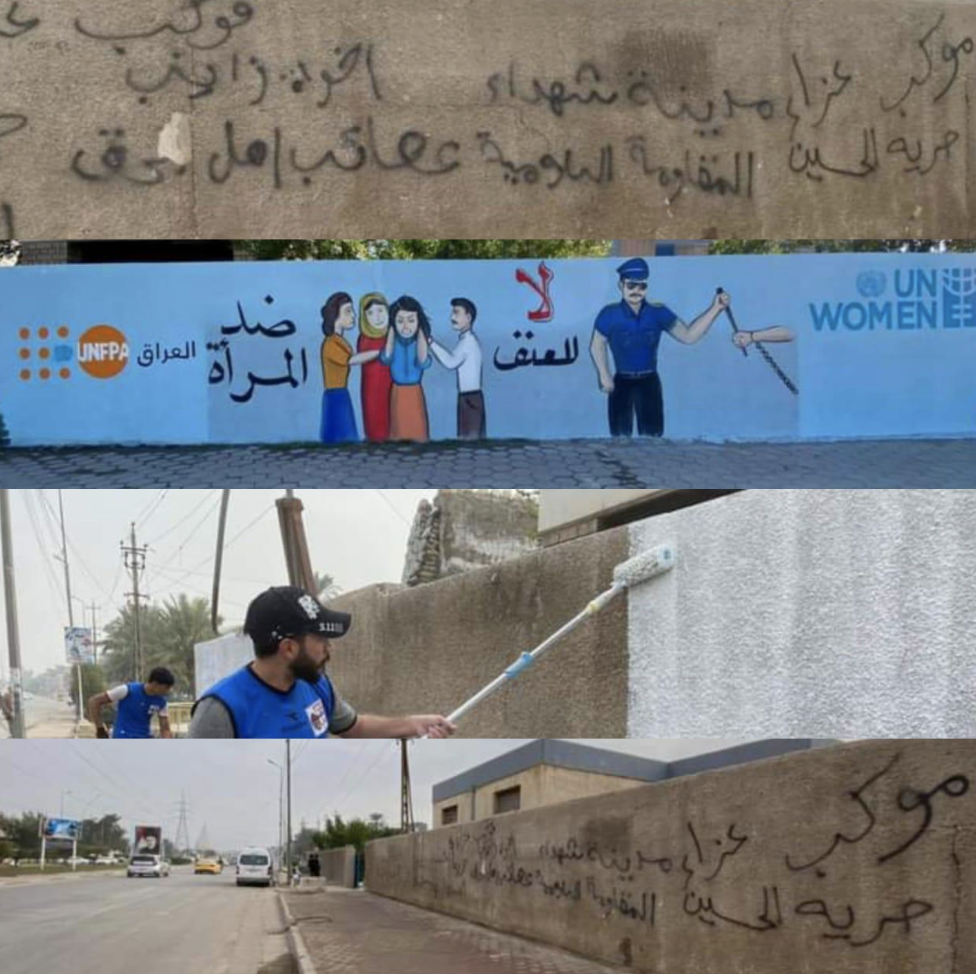
The drawings and paintings of “Imprint of Hope” became widespread on walls and concrete blocks, rising in the face of neglect and marginalization policies, and calling for peace, coexistence, and optimism.
Journalist Haydar Abdussalam commended the initiative of these young people “who take action on their own despite all the hindrances”, and said that “They are filling a void that the government has been unable to address.”
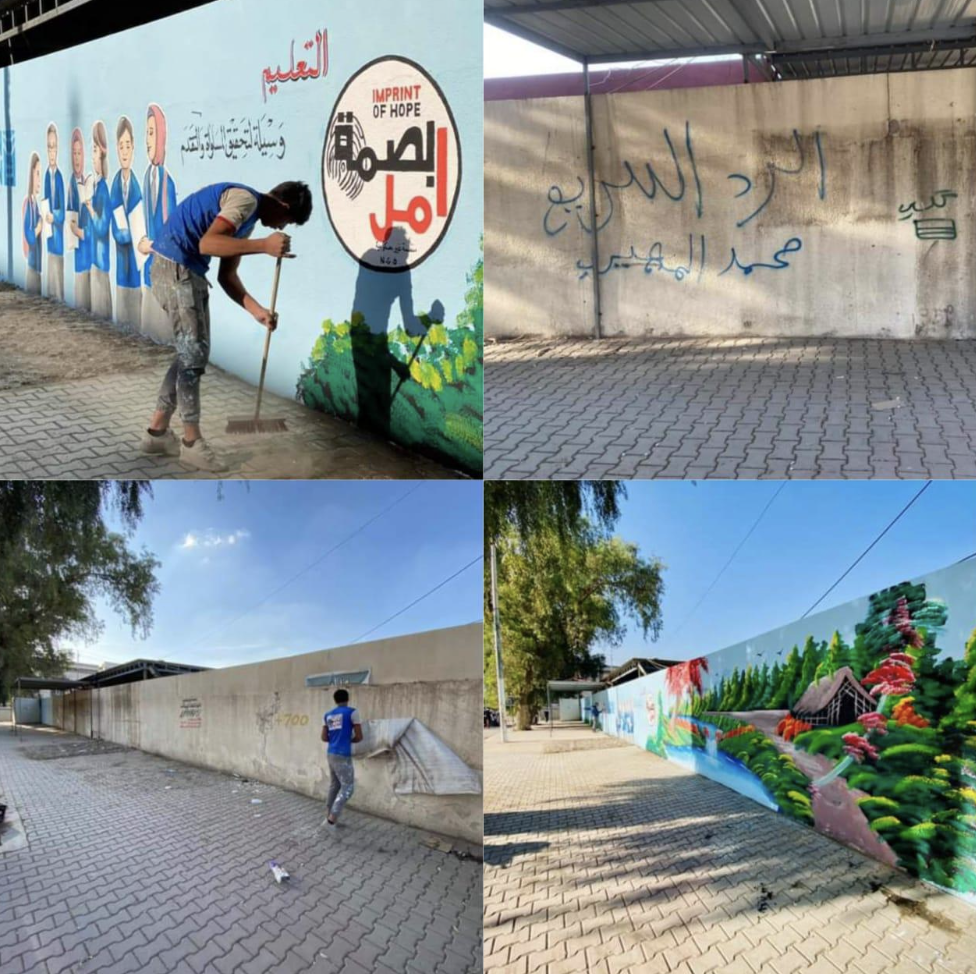
Achievements of “Imprint of Hope”
The organization carried out a number of awareness campaigns in different locations against violence and hate speech, and calling for peace, security and respect for human rights. More than 100 schools in Baghdad, in various low-income and remote neighborhoods; and many Iraqi universities, including Al-Ma’amoun University College, Baghdad Al-Jadriyah University, University of Technology, Al-Mustansiriyah University, and The Medical Technology College.
Awareness campaigns also reached the Children’s Hospital, Pediatric Cancer Department, and the Health Center located in Al-Iskan area; and the concrete blocks in Aden Square, in addition to religious places such as The Church of Our Lady of Salvation in Al-Karrada area, and kindergartens as Al-Karama Private kindergarten and Granada Kindergarten.
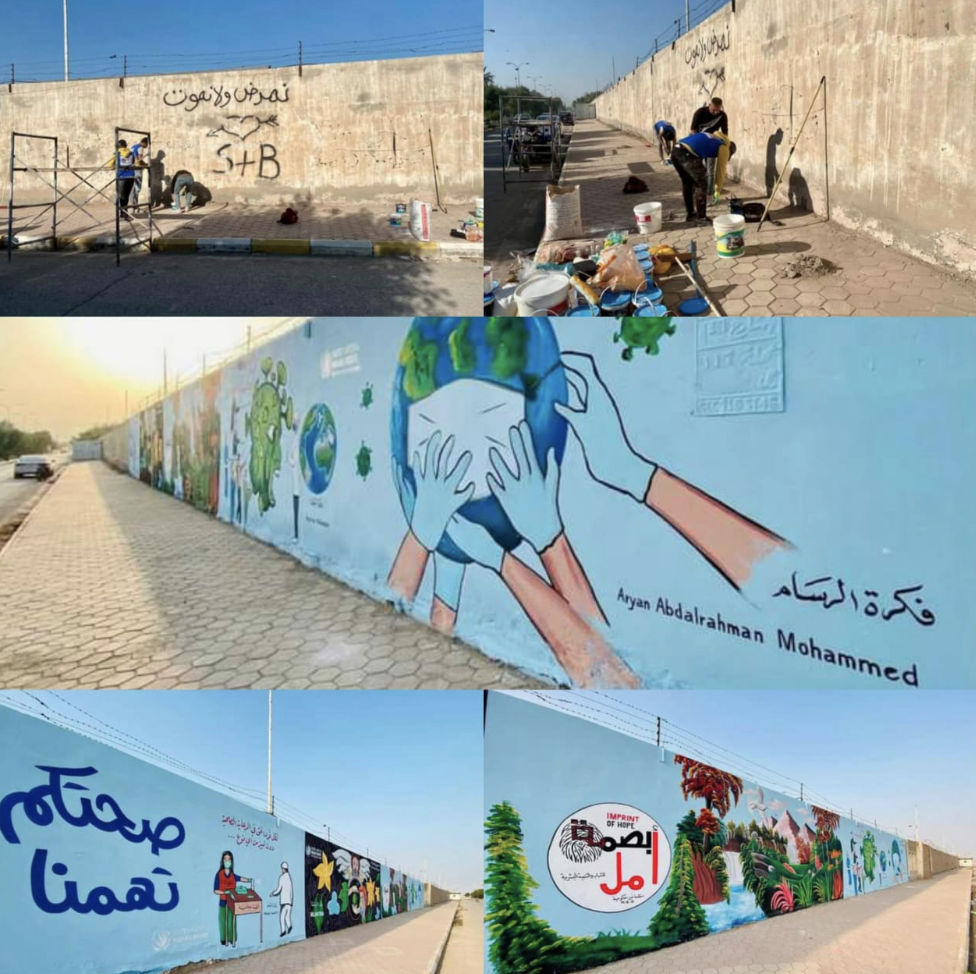
The organization’s work entailed the beautification of many main streets in Baghdad, by thorough cleaning followed by drawing impressive murals and paintings including the area below Al-Jadriyah Bridge, where the work went on for five consecutive days; the main entrance of Al-Kadhimiyah sacred area, as well as the entire Akkad Street and the entirety of Al-Salam Al-Tubji neighborhood. Beautification also reached the concrete blocks of the Ministry of Labour and Social Affairs, the entrance to Al-Hyrriyah area, and a number of geriatric care facilities in Baghdad, as well as foster care facilities.
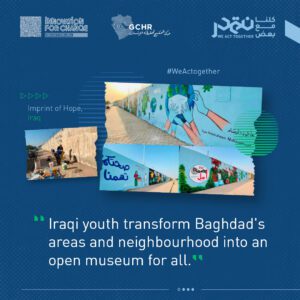
Therapeutic for the Painter and the Viewer Alike
Imprint of Hope, as the name suggests, has given hope, and the drawings created by its team had a therapeutic effect for those who drew them and for the spectators alike. The youth decorated and painted hundreds of walls in the capital city, in an attempt to send messages to the community at large and to young people more specifically, on the need to take action and move towards “creativity and achievement on the ground, and to abandon negative attitudes and frustration”. Imprint of Hope focused on public spaces; foster and geriatric care facilities; schools, universities and hospitals. The paintings of Imprint of Hope had brought much strength and boldness in delivering social messages and promoting change; which the organization sought to convey to the public, and make accessible to all.
